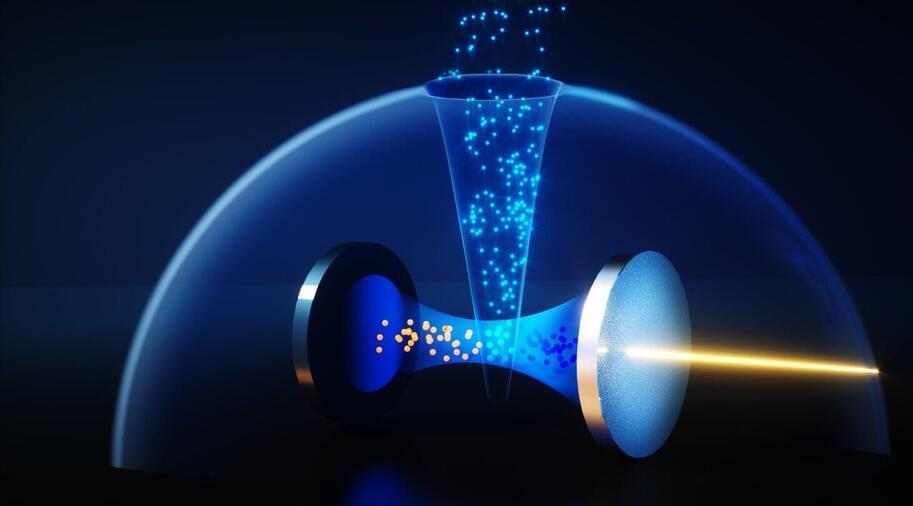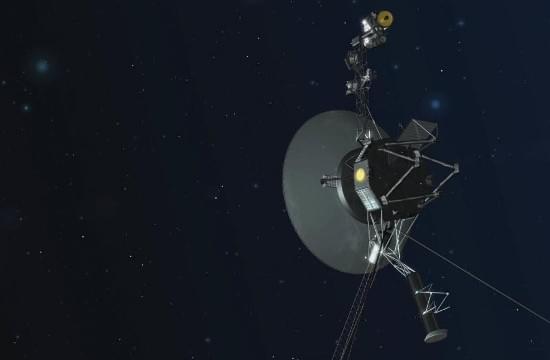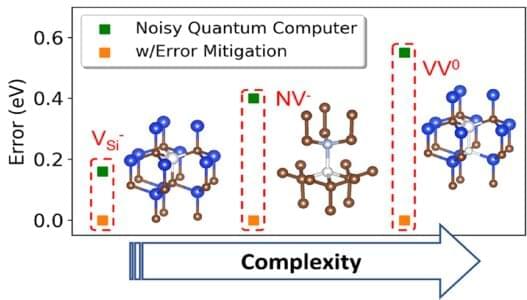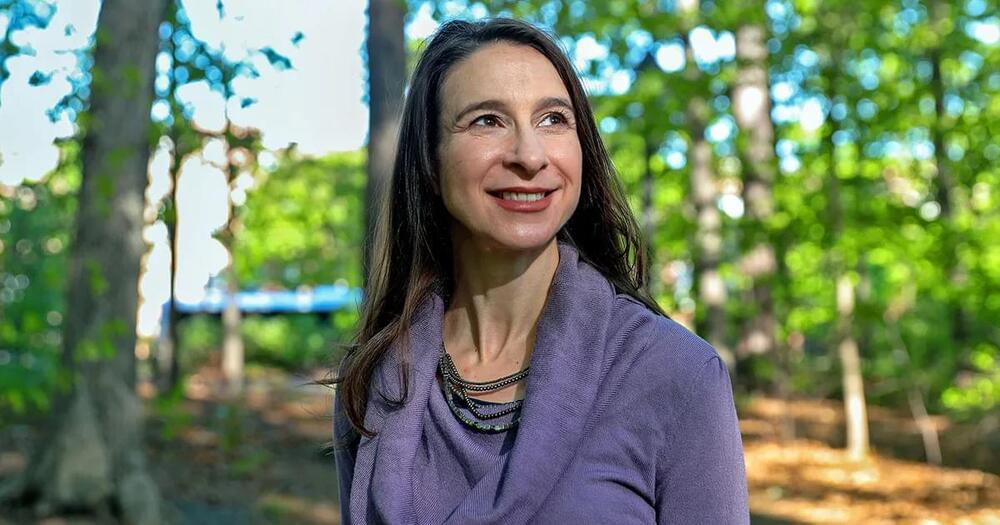A fighting faction in Sudan has occupied the country’s main public health lab, putting pathogen collections at risk, the WHO said.



A newly discovered phenomenon dubbed “collectively induced transparency” (CIT) causes groups of atoms to abruptly stop reflecting light at specific frequencies.
CIT was discovered by confining ytterbium atoms inside an optical cavity —essentially, a tiny box for light—and blasting them with a laser. Although the laser’s light will bounce off the atoms up to a point, as the frequency of the light is adjusted, a transparency window appears in which the light simply passes through the cavity unimpeded.
“We never knew this transparency window existed,” says Caltech’s Andrei Faraon (BS ‘04), William L. Valentine Professor of Applied Physics and Electrical Engineering, and co-corresponding author of a paper on the discovery that was published on April 26 in the journal Nature. “Our research has primarily become a journey to find out why.”
Note that this is very far away from a return to an anthropocentric worldview, to pre-Copernican times when the Earth was the center of Creation. (I call it biocentric to make the distinction clear.) Biocentrism is necessarily post-Copernican. I am saying that we are unique and important — but not for having been created by a god, or for being the result of a purposeful cosmic directive.
We are unique and important for being self-aware living entities capable of asking questions about their origin and future. We may not be the measure of all things as Protagoras of Abdera proclaimed long ago, but we are the things that can measure. We experience the world, we measure it, and we tell stories about what we see and what we feel. And what we are finding out is that we may very well be the only ones asking such questions — or, at the very least, the only ones we know of, which effectively amounts to the same thing. Even if “they” exist and tell stories, their stories will not be ours. There is only one human voice in the cosmos. And if we ruin our project of civilization, the Universe will once again become silent.
The acceptance of our cosmic loneliness and the rarity of our planet is a wakeup call, ringing to awaken a new collective consciousness. I believe it to be the new unifying myth of our generation, with the power to go beyond tribal divides and bigotry, to lead us into a new era of human flourishing. But for this to happen, we need to change how we relate to life and to the planet that allows us to exist. We are not above nature, and we don’t own it. We are a part of it and depend on it for our existence.

Voyager 2 is the only spacecraft to have studied the four giant planets of the Solar System. It was launched from Earth in 1977 and continues its extended mission through interstellar space, making new discoveries 45 years after launch.
A system hack extends the life of the 5 instruments still working on the venerable spacecraft, now over 45 years into its extended mission.
Researchers have found that for much of human evolutionary history our brains kept growing. In fact, if you count from our last shared ancestors with chimpanzees six million years ago, the human brain size almost quadrupled. This happened thanks in part to the improving diet and nutrition of early humans. Cro Magnons, the Homo sapiens that had the largest brains in history were alive from 20,000 to 30,000 years ago. But as the recent study from scientists at Dartmouth and Boston Universities points out, around 3,000 years ago, during the current Holocene geological epoch, our brains began to diminish.
His bold prediction and the reasoning behind it resurfaced in a YouTube video that has gone viral.

If you know the atoms that compose a particular molecule or solid material, the interactions between those atoms can be determined computationally, by solving quantum mechanical equations—at least, if the molecule is small and simple. However, solving these equations, critical for fields from materials engineering to drug design, requires a prohibitively long computational time for complex molecules and materials.
Now, researchers at the U.S. Department of Energy’s (DOE) Argonne National Laboratory and the University of Chicago’s Pritzker School of Molecular Engineering (PME) and Department of Chemistry have explored the possibility of solving these electronic structures using a quantum computer.
The research, which uses a combination of new computational approaches, was published online in the Journal of Chemical Theory and Computation. It was supported by Q-NEXT, a DOE National Quantum Information Science Research Center led by Argonne, and by the Midwest Integrated Center for Computational Materials (MICCoM).
A new gel-based treatment for glioblastoma—a highly aggressive form of brain cancer—has shown to be 100% effective at preventing recurrence in mice. Researchers hope the therapy will translate well into human physiology, where it could help resolve tens of thousands of cancer diagnoses every year.
Glioblastoma manifests as a tumor growing on the brain or spinal cord. While many glioblastoma patients have the tumor surgically removed, the mass often returns, even in cases involving post-surgical radiation or chemotherapy. The disease is so persistent that the average patient lives only 12 to 16 months after diagnosis, making glioblastoma one of the most lethal forms of cancer currently understood.
Researchers at Johns Hopkins University are working to improve patients’ life expectancies using an injectable gel that blocks cancer’s path. According to a paper published Tuesday in Proceedings of the National Academy of Sciences, the gel is made up of nano-sized filaments derived from the drug paclitaxel, which is used alongside chemotherapy to treat other forms of cancer. The gel serves as a vehicle for aCD47, an antibody that prompts macrophages to ingest tumor cells.

Archaeologists in Spain have unearthed five life-size busts of human figures that could be the first-known human depictions of the Tartessos, a people who formed an ancient civilization that disappeared more than 2,500 years ago.
The carved stone faces, which archaeologists date to the fifth century B.C., were found hidden inside a sealed pit in an adobe temple at Casas del Turuñuelo, an ancient Tartessian site in southern Spain. The pieces were scattered amongst animal bones, mostly from horses, that likely came from a mass sacrifice, according to a translated statement (opens in new tab) published April 18.
